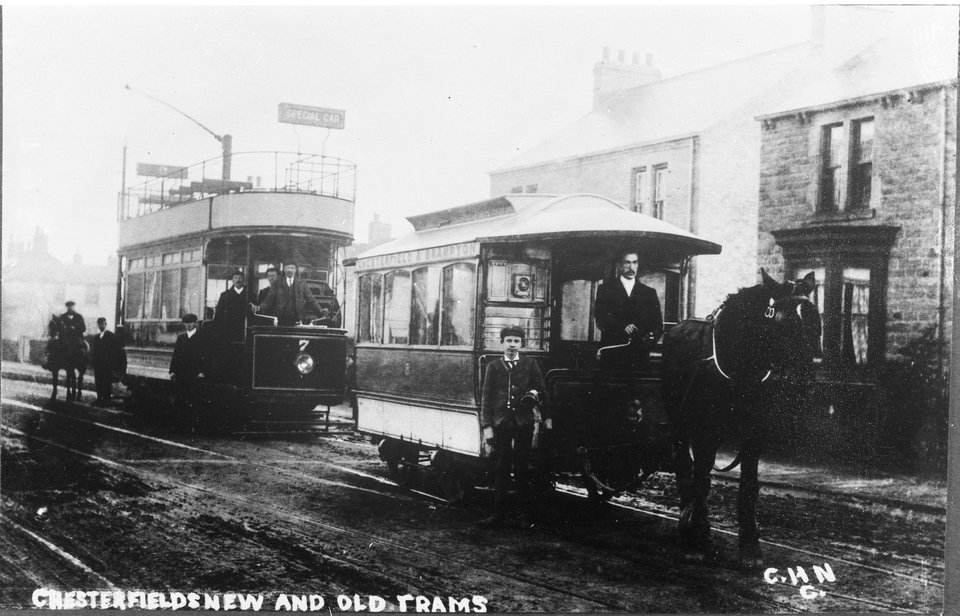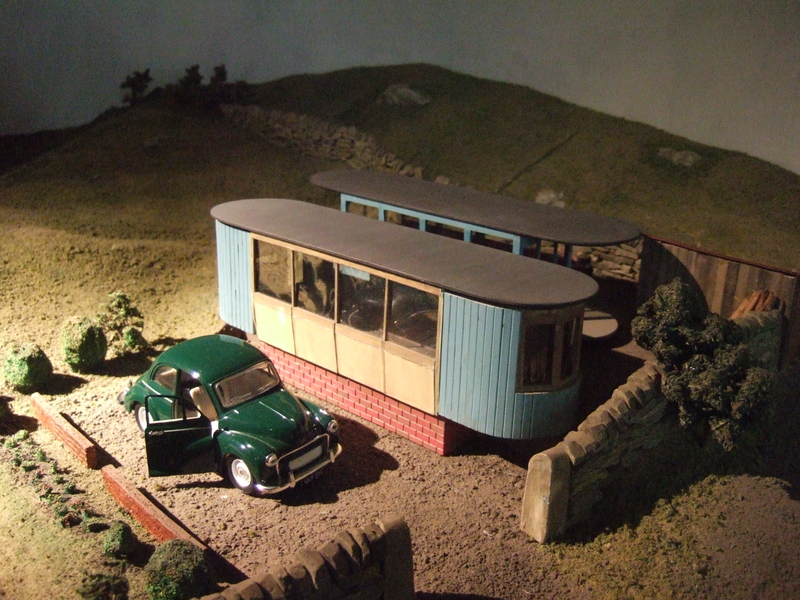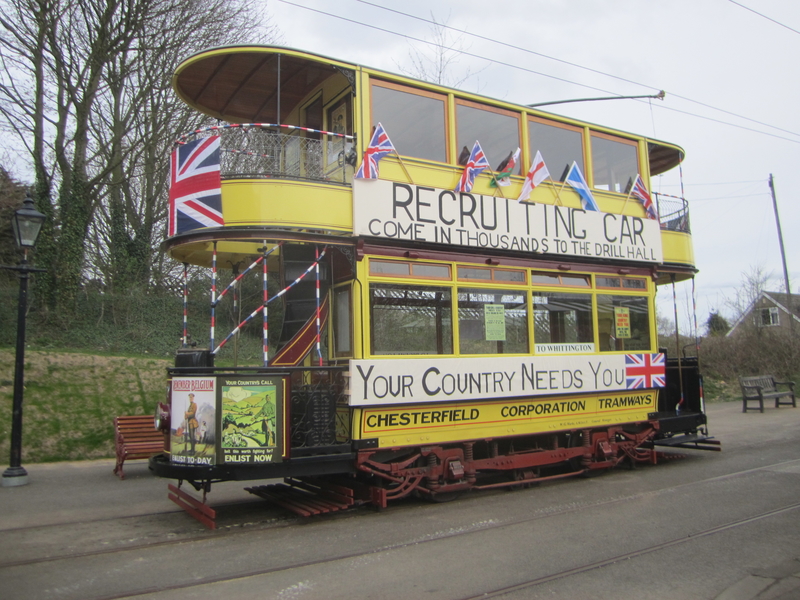Chesterfield Corporation No. 7
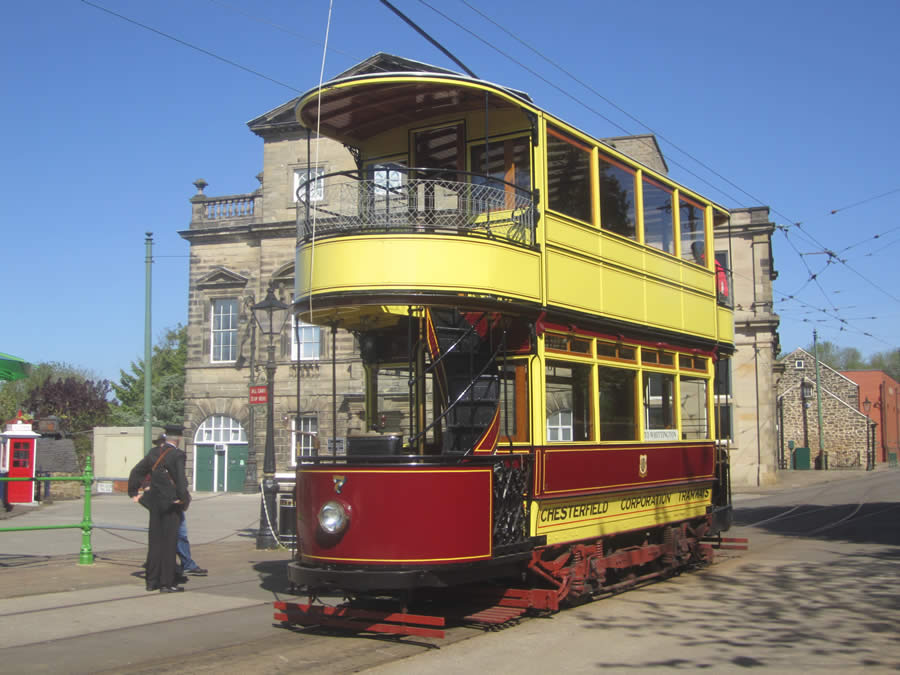
Photo: Jim Dignan.
Chesterfield was one of the first towns in England to use electricity to light its streets, in 1881, but this early experimental initiative only lasted for a couple of years and it was not until 1904 that Chesterfield Corporation decided to build an electricity generating station with a view to electrifying and extending its existing horse-drawn tramway.
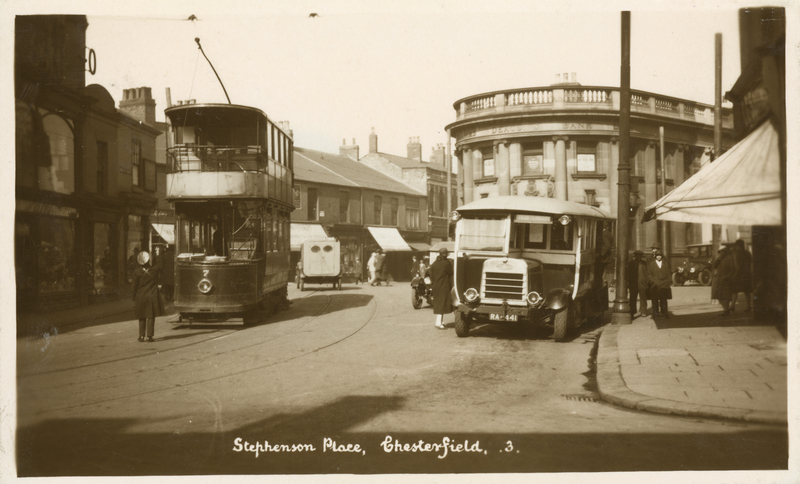
Chesterfield 7 in Stephenson Place. Photo courtesy of Crich TMS photo archive.
Chesterfield 7 led a charmed – and celebrated – life. Originally built in 1904 as an open-topped double decker by the Brush Electrical Engineering Company at Loughborough, it narrowly escaped destruction in a severe fire which gutted the Corporation tramshed in October 1916. Car 7, which was damaged in the blaze, was restored and a top canopy was added later at the start of 1919.
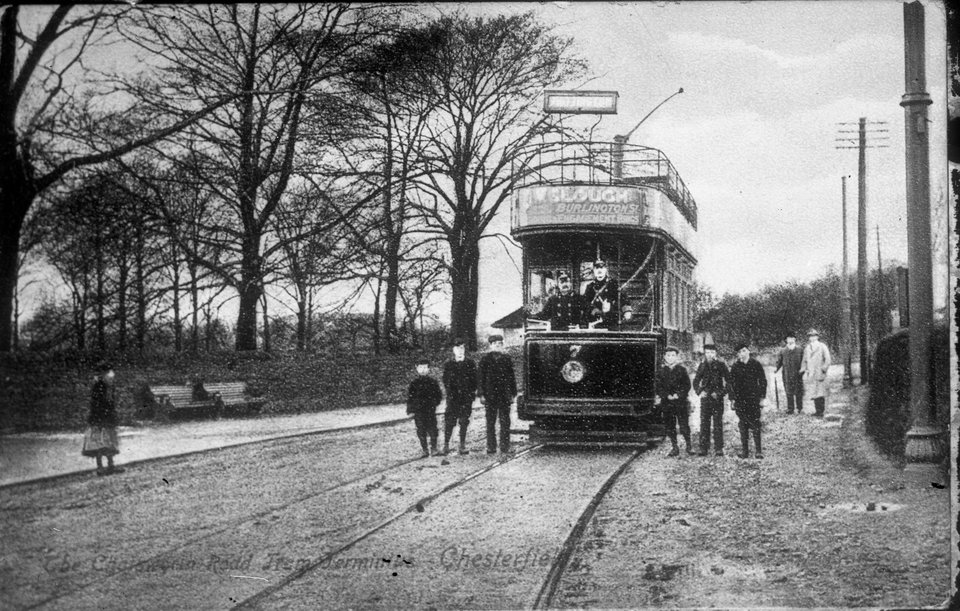
Chesterfield 7 at Brampton terminus, date unknown. Photo courtesy of Crich TMS photo archive
In common with many other tramway undertakings at the time, receipts from fares barely serviced the loans taken out to build the tramway and when the trackbed and components began to wear out, replacement – initially by trolleybuses – afforded a cheaper option than renewal of the tramway.
Specification
- Type of tram
- Electric passenger tram of the 'Aston' type – double deck; top covered tram with open vestibules (originally built as an open-topped tram)
- Livery
- Carmine red and primrose yellow
- Seating capacity
- 56 (34 on top deck; 22 downstairs)
- Date built
- 1904
- Date entered service
- 23 December 1904
- Manufacturer of body
- Brush Co.
- Manufacturer of truck
- Peckham P22 (originally Brush, Lycett & Conaty radial truck)
- Gauge
- 4’ 8½”
- Motor
- BTH RGE20 2 x 40 hp (originally 2 x 25hp Westinghouse motors)
- Controller
- Westinghouse T2C (originally Westinghouse 90)
- Current collector
- Trolley
- Modification
1st January 1919 – Brush top cover fitted; destination boxes removed.
- Withdrawn from service
23 May 1927 on closure of the tramway
- Subsequent history
Sold as holiday cottage and sited in Two Dales, Derbyshire
- Restoration history
1973 – Semi-derelict property purchased by TMS
1993-6 – Restored to operational condition at a cost of £120,000, paid for by the Tramcar Sponsorship Organisation.- Current status
- Restored to operational condition and commissioned for service during the current season.
- Date started operating at Crich
- 1997. Has operated during 27 seasons, most recently in 2024.
- Total mileage covered at Crich
- 22,060
- Current location
- Depots
- 1904 – 1927Fully operational on original tramway
- 1927 – 1973Converted into dwelling
- 1973 – 1993In storage awaiting restoration
- 1993 – 1997Undergoing restoration
- 1997 –Fully restored and operational at Crich until 2022 but not currently commissioned for service.

